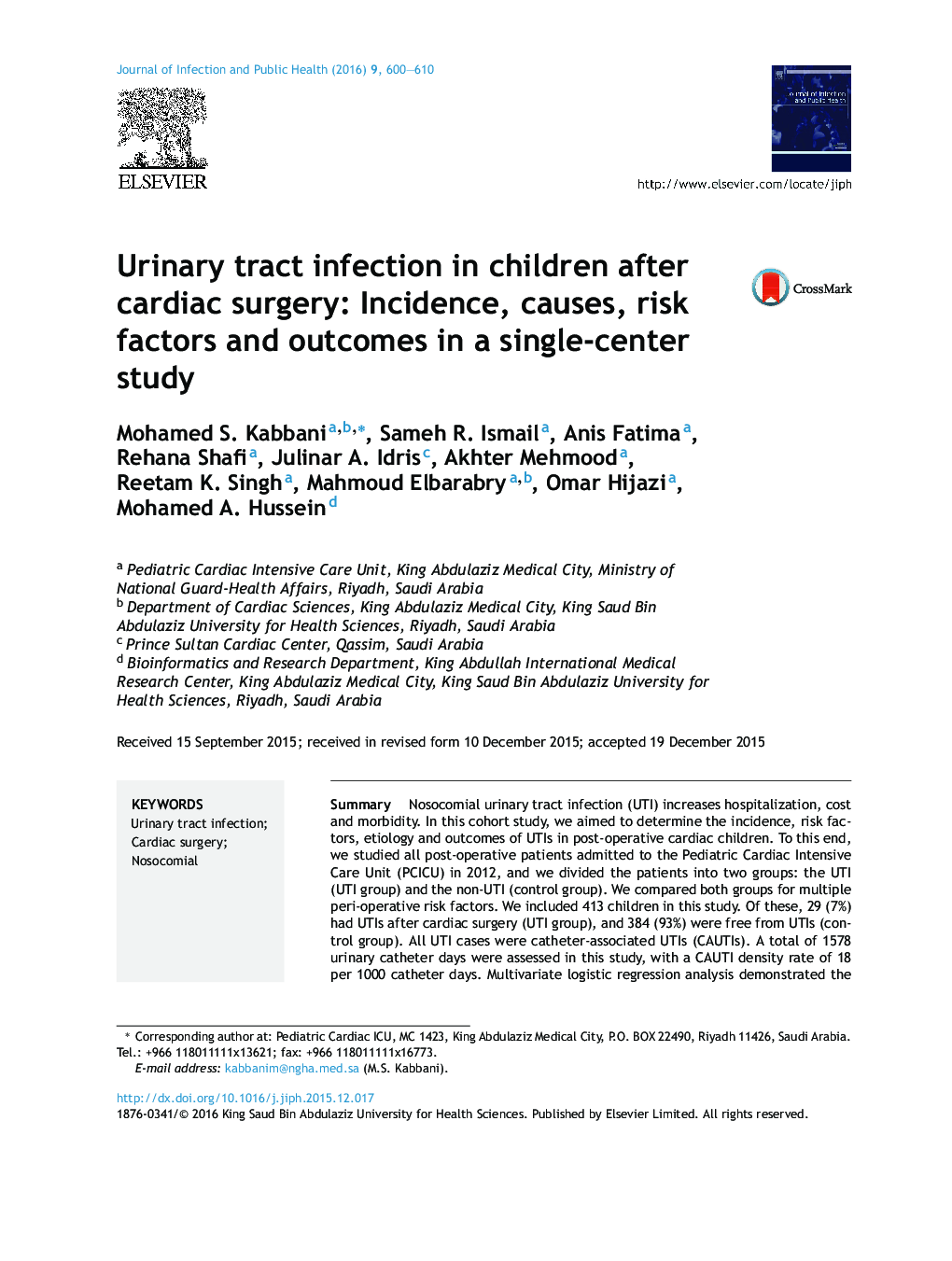| کد مقاله | کد نشریه | سال انتشار | مقاله انگلیسی | نسخه تمام متن |
|---|---|---|---|---|
| 3405801 | 1408123 | 2016 | 11 صفحه PDF | دانلود رایگان |
SummaryNosocomial urinary tract infection (UTI) increases hospitalization, cost and morbidity. In this cohort study, we aimed to determine the incidence, risk factors, etiology and outcomes of UTIs in post-operative cardiac children. To this end, we studied all post-operative patients admitted to the Pediatric Cardiac Intensive Care Unit (PCICU) in 2012, and we divided the patients into two groups: the UTI (UTI group) and the non-UTI (control group). We compared both groups for multiple peri-operative risk factors. We included 413 children in this study. Of these, 29 (7%) had UTIs after cardiac surgery (UTI group), and 384 (93%) were free from UTIs (control group). All UTI cases were catheter-associated UTIs (CAUTIs). A total of 1578 urinary catheter days were assessed in this study, with a CAUTI density rate of 18 per 1000 catheter days. Multivariate logistic regression analysis demonstrated the following risk factors for CAUTI development: duration of urinary catheter placement (p < 0.001), presence of congenital abnormalities of kidney and urinary tract (CAKUT) (p < 0.0041) and the presence of certain syndromes (Down, William, and Noonan) (p < 0.02). Gram-negative bacteria accounted for 63% of the CAUTI. The main causes of CAUTI were Klebsiella (27%), Candida (24%) and Escherichia coli (21%). Resistant organisms caused 34% of CAUTI. Two patients (7%) died in the UTI group compared with the one patient (0.3%) who died in the control group (p < 0.05). Based on these findings, we concluded that an increased duration of the urinary catheter, the presence of CAKUT, and the presence of syndromes comprised the main risk factors for CAUTI. Gram-negative organisms were the main causes for CAUTI, and one-third of them found to be resistant in this single-center study.
Journal: Journal of Infection and Public Health - Volume 9, Issue 5, September–October 2016, Pages 600–610
